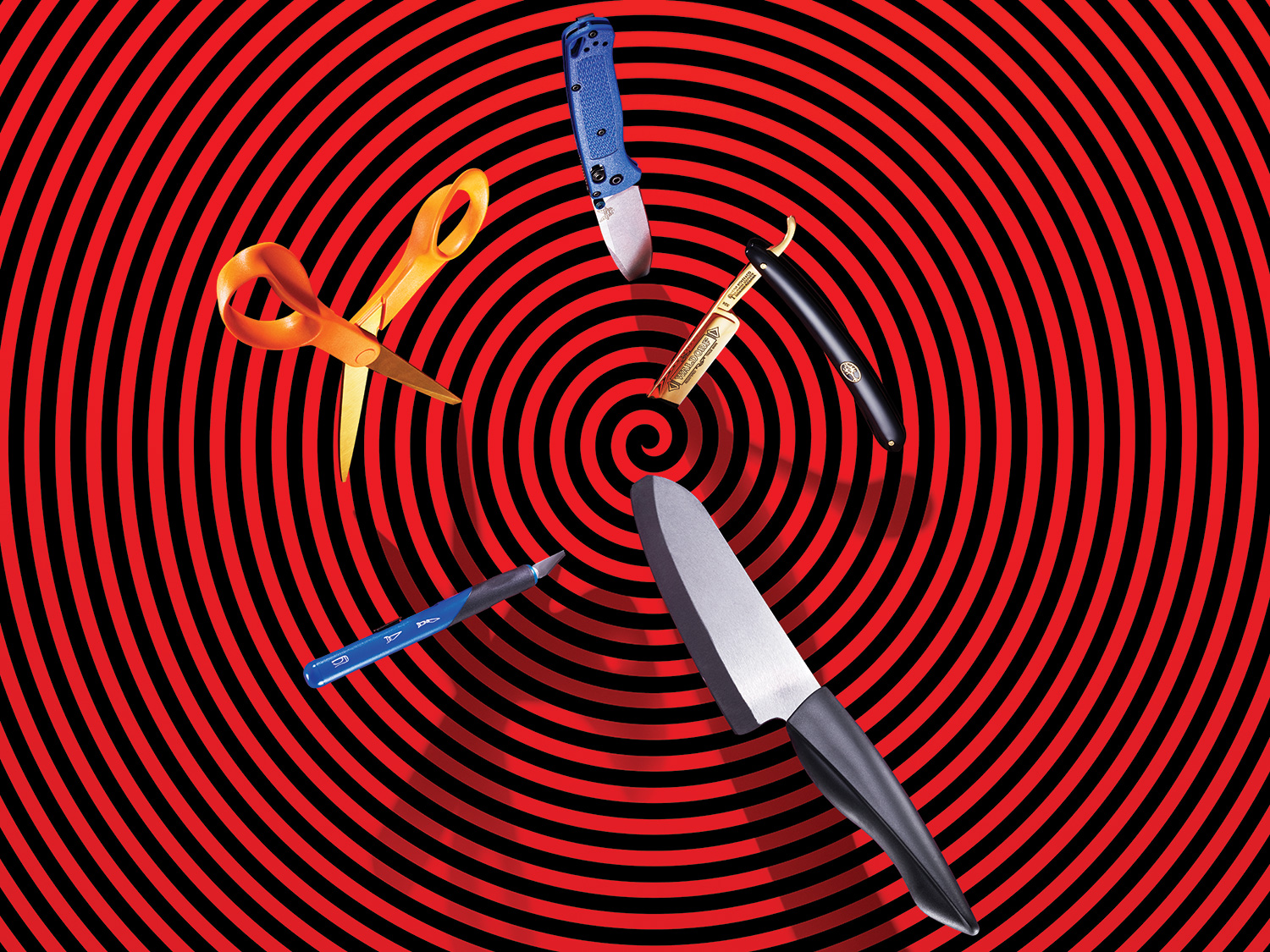


Sharp blades are safer. Struggling to force a dull edge through veggies or fabric makes you more likely to slip and take a bloody trip to the ER, with a fingertip on ice. Instead, wield these cutting tools, and their honed, tough blades, with joyful efficiency—and care.
1. Pocketknife
Sometimes you need to bust open an Amazon box or chop an onion on a camping trip. The Benchmade 535 Bugout folding knife hides a 3.24-inch steel-alloy cutter in its synthetic resin handle. As a result, the entire tool weighs less than 2 ounces.
2. Razor
When shaving, a worn or nicked blade will butcher sensitive skin. The 0.6-inch-wide cutter on the Waldorf 24 Carat Gold straight razor is carbon steel, which hones easily but is prone to corrosion over time. The gold outer coating, however, fights off rust while adding bling.
Related: Throwing knives is growing more popular—here’s how to get started
3. Kitchen knife
Kyocera’s 6-inch Chef’s Santoku has a ceramic blade that’s harder than steel, so it stays sharp up to 10 times longer than its flame-forged counterparts. The 6.4-ounce tool slices easily through slippery work such as carving raw boneless chicken.

4. Utility blade
The scalpel-like, 1-inch slicer on the X-Acto Retract-A-Blade breezes through crafty materials such as balsa wood or plastic. Once you’re done cutting, scoot down the slider on the handle to retract the pointy bit inside the 5-inch body for safe storage.
5. Scissors
To triple the strength of its Titanium Scissors, Fiskars coated the stainless-steel choppers with a layer of its namesake metal. The 8-inch-long prongs won’t dull or ding, even after an unfortunate encounter with a staple or pin.
This article was originally published in the Winter 2018 Danger issue of Popular Science.
